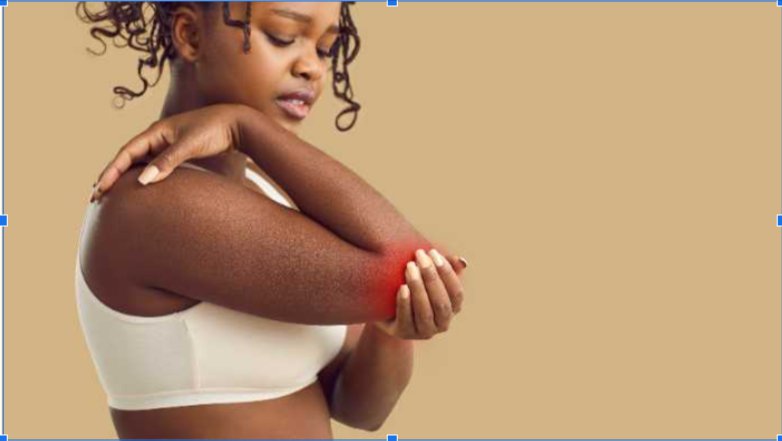
Elbow injuries can cause a great deal of pain and discomfort. It is important to seek medical attention if you suspect you have an elbow injury. Early diagnosis and treatment is crucial in preventing long-term damage. Whether they’re experiencing sports injuries or overuse injuries, many people tend to suffer from the same conditions.
At Jefferson Orthopedic Clinic, our board-certified orthopedists work to understand elbow injuries and focus on treating many different elbow injuries and conditions. Our goal is to help patients diminish pain and discomfort and help them return to a life of comfort.
Here are the top five most common elbow injuries and how they are treated.
1. Tennis Elbow (Lateral Epicondylitis)
One of the most common elbow injuries is tennis elbow, which is a condition that causes pain on the outside of the elbow. Tennis elbow is caused by inflammation of the tendons that attach to the bony knob on the outside of the elbow (lateral epicondyle). Despite the name, the majority of people who develop tennis elbow are not tennis players. Rather, they are people whose jobs or hobbies involve repetitive motions of the arm and wrist, such as painting or using a hammer.
Tennis elbow is best described as an overuse injury which typically can be cured by a nonsurgical treatment. Tennis elbow is treated with a combination of rest, ice, and over-the-counter anti-inflammatory medications. In some cases, physical therapy and strengthening exercises may be recommended. In extreme cases, tennis elbow surgery may be required.
2. Golfer’s Elbow (Medial Epicondylitis)
Golfer’s elbow is very similar to tennis elbow, but it occurs on the inside of the elbow (medial epicondyle) rather than the outside. Just like tennis elbow, golfer's elbow does not just occur in golfers. It can be caused by any activity that puts repetitive stress on the muscles and tendons of the forearm. Stiff elbows or weak hands and fingers could be a symptom of golfer's elbow.
Golfer’s elbow is treated in much the same way as tennis elbow, with a combination of rest, ice, and over-the-counter anti-inflammatory medications. Physical therapy and strengthening exercises may also be recommended. If immediate relief is required, glucocorticoid injections, (anti-inflammatory steroid injection) may be available.
3. Cubital Tunnel Syndrome
Cubital tunnel syndrome is a condition that occurs when the ulnar nerve becomes compressed. The ulnar nerve runs from the shoulder to the hand, and passes through a narrow space at the inside of the elbow called the cubital tunnel. When this nerve becomes compressed it can cause elbow pain, numbness, and tingling in the arm and hand.
Cubital Tunnel Syndrome is caused by frequent bending of the elbow such as pulling or lifting. Injuries or dislocations of the elbow can also cause this. Treatments consist of anti-inflammatory medication, braces, or splints. In extreme cases, surgery may be required.
4. Olecranon Bursitis
Olecranon bursitis is a condition that occurs when the bursa (fluid-filled sac) becomes inflamed. The bursa is located at the point of the elbow, and its main function is to reduce friction between the bones and muscles in the area. When this bursa becomes inflamed it can cause pain and tenderness at the elbow. Olecranon bursitis is often caused by repetitive motions of the elbow, such as those that occur during sports or work activities. It can also be caused by direct trauma to the area, or by an infection.
Symptoms of Olecranon Bursitis can include redness, pain, fever, and chills. Treatment involves rest, ice, and over-the-counter anti-inflammatory medication. In some cases, physical therapy may be necessary. If the bursitis is caused by an infection, antibiotics will be necessary. Surgery may be required to remove the bursa to avoid harm to the surrounding muscles and ligaments.
5. Rheumatoid Arthritis
Rheumatoid arthritis is a chronic inflammatory disorder that can affect the joints, muscles, and tendons. This condition causes the body’s immune system to attack healthy tissue, resulting in inflammation, pain, and damage. Symptoms of rheumatoid arthritis include joint pain, stiffness, swelling, and loss of range of motion.
The cause of Rheumatoid Arthritis is unknown, but occurs when the immune system attacks healthy body tissue. Rheumatoid arthritis can be treated with medications, rest, or physical therapy. If arthritis persists, surgery or joint replacement may be necessary.
If you or someone you know is suffering from an elbow or related injury, Visit Jefferson Orthopedic Clinic or contact us directly on our website today!
Frequently Asked Questions
What are the most common elbow injuries, and how are they treated?
Common elbow injuries include tennis elbow, golfer’s elbow, cubital tunnel syndrome, olecranon bursitis, and rheumatoid arthritis. Treatments range from rest and physical therapy to medications or surgery, depending on the severity.
How can I tell if I have tennis elbow or golfer’s elbow?
Tennis elbow causes pain on the outside of the elbow, while golfer’s elbow affects the inside. Both are caused by repetitive arm and wrist motions. If you’re experiencing persistent elbow pain, book an appointment with Jefferson Orthopedic Clinic for an accurate diagnosis and treatment plan.
When should I see a doctor for elbow pain?
You should see a doctor if your elbow pain persists for more than a few days, worsens with movement, or is accompanied by swelling, numbness, or tingling. Don’t wait—schedule a visit with Jefferson Orthopedic Clinic to prevent further complications and start your recovery.
What is cubital tunnel syndrome, and how is it treated?
Cubital tunnel syndrome occurs when the ulnar nerve is compressed, causing pain, numbness, or tingling in the elbow, arm, and hand. Treatment options include anti-inflammatory medications, braces, or surgery in severe cases.
How can I prevent common elbow injuries like tennis elbow or bursitis?
Prevent elbow injuries by avoiding repetitive motions, using proper techniques during activities, and strengthening your arm muscles. If you’re experiencing discomfort, visit the nearest clinic for expert advice and care to keep your elbows healthy.
